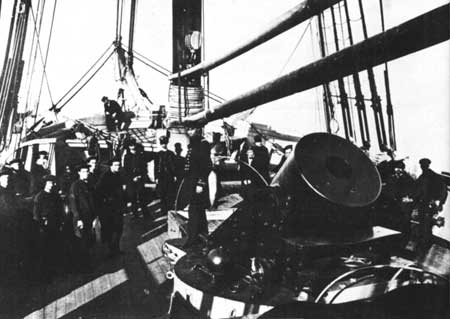|
VICKSBURG National Military Park |
 |

Each of Porter's mortar boats carried one of these giant 17,000-pound mortars
which hurled 200-pound shells into Vicksburg throughout the campaign and siege.
Courtesy National Archives.
The Siege of Vicksburg (continued)
CIVILIAN LIFE IN VICKSBURG DURING THE SIEGE. For the civilian population of Vicksburg, the siege was a grim and harrowing experience. Ordered to evacuate the city or prepare to face siege, many of the townspeople preferred to remain and share the fate of the army. They were joined by refugees accompanying the Confederate retreat into the city. Vicksburg had been subjected to periodic naval bombardment during the year of preliminary action and continuously during the siege. For relief and protection against shellfire, many of the towns people occupied caves dug into the city's plentiful hillsides.
To the civilians, as to the Confederate soldiers, there seemed only three intervals during the day when the shelling ceased—8 a. m., noon, and 8 p. m.—when the Union artillerymen ate their meals. However, much of the accustomed social life of the town continued. Men and women passed along the streets despite frequent shell explosions, and the town's newspaper continued to appear—finally printed on wall paper. Despite the artillery fire, few civilians were killed, although many dwellings were destroyed or badly damaged. Over more and more buildings, as the siege progressed, the yellow hospital flags floated. Thousands of Confederate sick and wounded were brought into the city, many being cared for by the women of Vicksburg. In the latter stages of the siege the food stores of the city were badly depleted, placing the people of Vicksburg on extremely short rations.

|

| History | Links to the Past | National Park Service | Search | Contact |
|
Last Modified: Mon, Dec 2 2002 10:00:00 am PDT |

